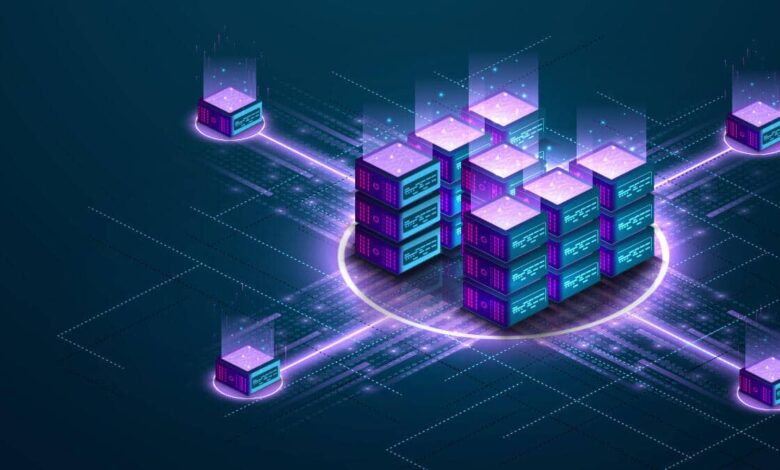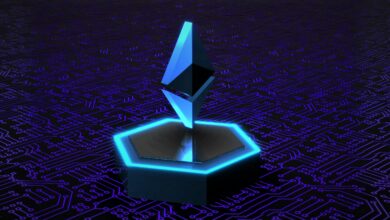Blockchain Technology: What Is It, How It Works, and How It Can Be Used
Dive into the world of blockchain technology, understand its core principles, and explore its potential to revolutionize various industries. From secure transactions to transparent governance, blockchain promises a decentralized future full of possibilities.

Table of Content
Imagine a colossus, a digital ledger accessible to everyone, where every transaction is recorded in chronological order and can’t be tampered with. That’s what blockchain is! It’s a shared database that stores information in blocks, chained together using cryptography. Think of it like a lengthy, secure string of digital building blocks, where each block contains data and a link to the previous block.
Blockchain is a decentralized database technique that saves information, making it highly resistant to tampering, hacking, or fraudulent activities. A digital ledger that records double entries and is shared within the blockchain network. This implies that in the event of a computer system being compromised, the rest of the network remains unharmed.
How Blockchain Idea Initiated?
The roots of blockchain extend further than you might think! Before Bitcoin, in the 1990s, researchers like Stuart Haber and W. Scott Stornetta envisioned a system for tamper-proof timestamps on documents using cryptography. This concept of chained blocks laid the groundwork. Then, in 2008, the enigmatic Satoshi Nakamoto published a white paper on Bitcoin, a digital currency that solved the “double-spending” problem without central authorities.
This ingenious solution relied on a public, distributed ledger – the first practical implementation of blockchain technology. While Bitcoin catapulted blockchain into the spotlight, its potential extends far beyond cryptocurrencies, paving the way for a future of secure, transparent transactions and data management across various industries.
So, remember, blockchain’s birth wasn’t a singular spark but a gradual culmination of ideas over decades, finally ignited by the revolutionary vision of Bitcoin. And its potential has just begun to simmer, promising to reshape how we record, share, and trust information in the years to come.
How businesses can leverage blockchain
Well, my reader of this article must think about how businesses can leverage blockchain to gain a competitive edge. Allow me to present a straightforward analogy to grasp the concept of how blockchain operates: Picture a book where every transaction is meticulously documented in chronological order. Every page of the book resembles a block in the blockchain, with each block being securely connected to the preceding and succeeding blocks through cryptography. It becomes challenging to manipulate any data within the blockchain since altering one block necessitates modifying all the subsequent blocks as well.
With technological advancement and maturity, we can expect even more innovative applications to emerge, transforming how businesses leverage and interact with their stakeholders. Remember, the key to successfully utilizing blockchain is identifying a specific business need where its unique strengths can add significant value. By analyzing the potential benefits and carefully considering challenges, businesses can leverage blockchain to achieve enhanced efficiency, security, and trust in their operations.
1. Enhanced Supply Chain Management:
- Track and Trace: Track goods movement through the supply chain in real-time, ensuring authenticity and provenance. This is especially valuable for high-value or perishable goods.
- Reduce Fraud: Eliminate counterfeit products and streamline logistics processes, minimizing costly delays and errors.
- Transparency and Sustainability: Build trust with consumers by offering detailed information about product origins and ethical sourcing practices.
2. Streamlined Financial Transactions:
- Cross-border Payments: Facilitate faster, cheaper, and more secure international payments by eliminating intermediaries and manual verification.
- Securing Assets: Manage and trade digital assets like stocks and bonds on a secure and transparent platform.
- Smart Contracts: Automate agreements and execute transactions automatically upon fulfilment of pre-defined conditions, reducing time and paperwork.
3. Improved Data Security and Privacy:
- Decentralized Data Storage: Securely store and share sensitive data on a distributed ledger, reducing vulnerability to hacking and data breaches.
- Identity Management: Enable secure and tamper-proof identity verification systems, simplifying KYC/AML processes and preventing fraud.
- Data Ownership and Control: Give individuals greater control over their data by allowing them to manage and monetize it directly.
4. Revolutionizing Specific Industries:
- Healthcare: Securely manage medical records, track medication supply chains, and facilitate faster insurance claims processing.
- Voting Systems: Build tamper-proof voting systems that enhance trust and transparency in elections.
- Digital Rights Management: Securely manage intellectual property rights and track content distribution, benefiting artists and creators.
How Blockchain Works: The Working Mechanism
Imagine a shared notebook, open to everyone on the network, where every transaction is recorded in sequence. Each page, filled with entries, forms a “block”. These blocks are then chained together, each referencing the previous one with a unique digital fingerprint. Tampering with one block becomes impossible because it throws off the whole chain’s fingerprint.
Now, picture each computer on the network having a copy of this notebook. When a new transaction happens, it gets broadcast to everyone. Each computer then verifies the transaction and solves a complex math puzzle to earn the right to add the new block to their copy of the chain. The first to solve the puzzle wins, adding their validated block to the chain, visible to everyone instantly. This creates a consensus – if the majority agrees on the validity, it’s added.
This intricate dance of recording, verifying, and securing transactions is the heart of blockchain’s “working mechanism”.
The spreading nature eliminates single points of failure, while cryptography and consensus mechanisms ensure data integrity and trust. This opens doors to revolutionary applications in finance, healthcare, and beyond, where secure, transparent record-keeping is paramount.
Transactional Process
1. Initiation:
A user initiates a transaction using a blockchain-compatible wallet or application. The transaction includes essential details:
-
- The sender’s and recipient’s addresses
- Amount of Cryptocurrency or assets to be transferred
- A transaction fee (incentive for miners)
- A cryptographic signature (using the sender’s private key) to ensure authenticity
2. Broadcast:
The transaction is broadcast to a network of distributed nodes (computers) that maintain copies of the blockchain ledger. This dissemination ensures transparency and prevents single-point failures.
3. Validation:
Nodes independently verify the transaction’s legitimacy:
-
- Sufficient funds in the sender’s account
- The signature matches the sender’s public key
- Adherence to blockchain rules and protocols
4. Propagation:
Valid transactions are propagated throughout the network, reaching most nodes.
5. Grouping into Blocks:
- Miners, specialized nodes, collect valid, pending transactions into blocks.
- Each block has a limited capacity, links to the previous block and creates a chain-like structure.
6. Consensus Mechanism:
The initial miner who successfully validates a block is entitled to receive rewards, including newly created cryptocurrency and transaction fees. Miners compete to verify blocks and add them to the blockchain:
-
- Proof-of-Work (PoW): Miners solve complex mathematical puzzles requiring computational power.
- Proof-of-Stake (PoS): Miners stake a portion of their cryptocurrency to validate blocks.
7. Block Addition:
- The verified block is added to the blockchain, permanently recording the transactions within it.
- This creates an immutable, tamper-proof ledger of all transactions.
8. Completion:
- The transaction is now considered complete and irreversible.
- The recipient can access the transferred assets.
9. Replication:
- All nodes synchronize their copies of the blockchain with the new block, guaranteeing uniformity and duplication.
Key Points:
- Decentralization: No central authority controls transactions; consensus among nodes ensures validity.
- Security: Cryptographic signatures and blockchain’s immutability safeguard transactions.
- Transparency: All transactions are openly seeable on the blockchain.
- Immutability: Once added, blocks and transactions cannot be altered or deleted.
- Efficiency: Transactions are processed relatively quickly, often within minutes.
- Traceability: The blockchain’s history allows for transaction tracing.
Prominent Services
Blockchain-as-a-Service (BaaS) Platforms
Blockchain-as-a-Service (BaaS) platforms are gaining serious traction in the world of blockchain technology. They cater to individuals and organizations who want to leverage the benefits of blockchain without the hefty technical burden of building and maintaining their blockchain infrastructure.
- Amazon Managed Blockchain
- Microsoft Azure Blockchain Service
- IBM Blockchain Platform
- Oracle Blockchain Platform
- Alibaba Cloud Blockchain as a Service
Development Platforms and Tools
- ConsenSys Quorum is an enterprise-focused:
Ethereum-based platform for building permission blockchains, known for data privacy and transaction scalability. - Hyperledger Fabric:
An open-source framework for developing permission blockchains, widely used in supply chain, finance, healthcare, and other industries. - R3 Corda:
Open-source blockchain platform designed for business-to-business (B2B) transactions, focusing on privacy and legal compliance. - Stellar:
Open-source blockchain platform for cross-border payments and asset transfers, designed for speed, scalability, and low transaction costs. - Hedera Hashgraph:
Distributed ledger technology claiming fast, secure, and fair consensus is used for various applications, including payments, supply chain tracking, and gaming.
Cryptocurrency Exchanges and Smart Wallets:
- Coinbase:
Popular cryptocurrency exchange for buying, selling, and storing cryptocurrencies like Bitcoin, Ethereum, and Litecoin. - Binance:
Leading global cryptocurrency exchange with a wide range of trading pairs and services, including staking and lending. - Kraken:
Secure cryptocurrency exchange known for advanced features and trading options, supporting fiat currencies and margin trading. - BlockFi:
Interest-earning account for cryptocurrency, offering loans and credit card rewards in crypto. - Exodus:
User-friendly multi-currency wallet for storing and managing cryptocurrencies with built-in exchange functionality.
Consulting and Development Firms:
- Accenture:
A worldwide Consulting firm with extensive technology expertise, offering services in strategy, development, and implementation. - IBM Blockchain Services:
IBM’s consulting arm for blockchain solutions assists enterprises in various industries with blockchain adoption. - Deloitte:
Leading professional services firm with a dedicated blockchain practice, providing advisory and development services. - ConsenSys:
A significant blockchain technology company offering a suite of products and services, including consulting, development, and infrastructure. - Chainalysis:
Blockchain analysis and compliance company providing tools for tracing and monitoring cryptocurrency transactions.
FAQ’s About Blockchain
Is Blockchain Need Of Digital Currency?
Whether blockchain is necessary for digital currency is a complex question with no definitive answer. While blockchain certainly offers advantages for certain types of digital currencies, it’s not the only way to achieve a digital payment system. The blockchain has significant advantages for some digital currencies, but it’s not an absolute requirement. The use of technology depends on the respective needs and goals of the digital currency system, including factors like the desired level of decentralization, transaction speed, security, and regulatory constraints. Conclusionaly, the optimal solution may involve a combination of blockchain and other technologies tailored to the specific use case.
What is Blockchain?
It is a fundamental concept in the world of technology, serving as a distributed, immutable, and decentralized ledger. It operates by linking together a series of blocks, each containing a specific set of data. The blocks are connect using cryptographic techniques and create a sequential chain of information.
What is DLT?
DLT stands for Distributed Ledger Technology. It’s a complex topic, but I can break it down into simpler terms, like a public record book, like a giant spreadsheet. Still, instead of being stored in one place, it’s copied and updated simultaneously on many computers across a network. That’s what a DLT is. It’s a shared database that everyone on the network can access and update, but no one can tamper with.
What is the potential future of blockchain technology?
Is Block Chain Impacting the Economy?
One big accounting firm estimated that cryptocurrencies and Blockchain would contribute almost two trillion dollars to the global economy by 2030. This value would come from lower transaction costs, greater transparency, more comprehensive access to capital, and improvements in information security. To Know more, read How Can Blockchain Affect the Economy?




